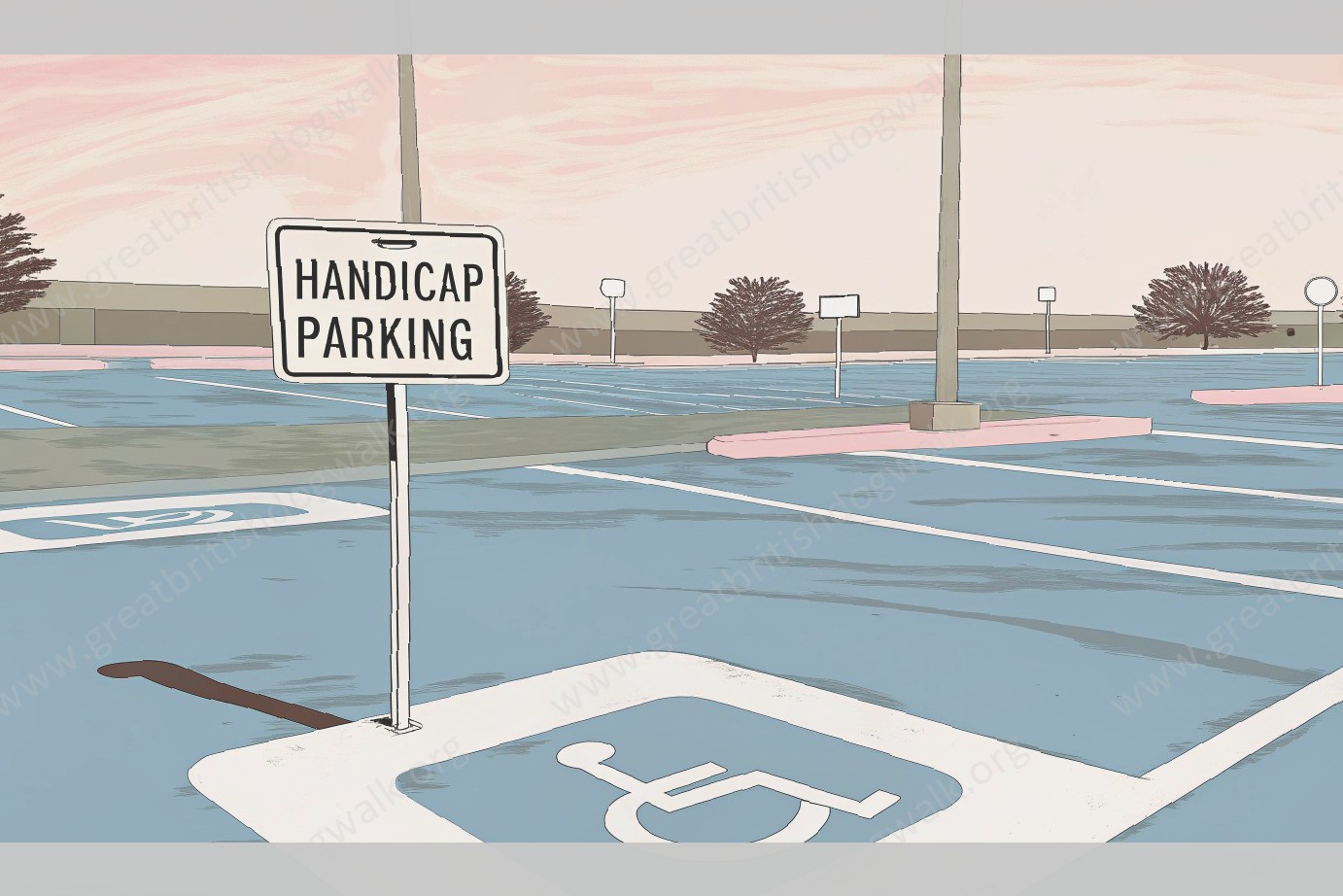Texas Handicap Parking Laws: An Overview
Regulations surrounding handicap parking in Texas are designed with two key principles in mind. First and foremost, they ensure the safety of our most vulnerable citizens. Secondly, they provide peace of mind to their families and caregivers. To accomplish these goals through fair and efficient enforcement of handicap parking regulations, guidelines and criteria have been established to provide uniformity throughout the state.
In Texas, municipal ordinances regarding accessibility for persons with disabilities, and the federal Americans with Disabilities Act (ADA) are the primary sources of information on accessible parking. In addition to these criteria, the Texas Accessibility Standards (TAS) were created by the Texas Department of Licensing and Insurance in conjunction with the Texas Architectural Barriers Advisory Board. TAS Standards are based on the ADA, and they apply to all public facilities and the majority of private facilities in the state of Texas.
Parking lots, parking garages, and other facilities that are required to have accessible parking spaces typically fall under one of several sets of rules. These sets of guidelines or codes relate to rehabilitation facilities (such as hospitals), housing facilities, educational facilities (such as schools), and general public facilities (such as retail and recreational facilities). While variations between these code sets exist, guidelines for accessible parking are found within each. For example, under municipal ordinances, commonly enforced handicap spaces are clearly marked with blue signage featuring the international accessibility symbol . It is important to understand that these signs must be placed and fastened in a manner that will not permit them to be easily obstructed. Likewise, there are clear regulations concerning angled spaces, penalties for violations, and how local law enforcement officials enforce relevant handicapped parking regulations.
Although the aforementioned Texas Accessibility Standards (TAS) differ slightly from municipal ordinances, these standards are similar to ADA guidelines regarding the design of parking lots or garages. They require that accessible parking spaces be contiguous and located close to the facility entrance. Additionally, these spaces must be appropriately marked with blue paint markers and signage featuring the international accessibility symbol.
According to ADA Parking Lot and Garage Guidelines, accessible spaces must be easily accessible to persons with disabilities. Further, they must be at least 96 inches wide, and at least 60 inches long. Likewise, the lot must be as flat as possible, with no more than five percent maximum cross slope and no more than two percent slopes in the direction of parking space travel. On a related note, and beginning in November 2015, accessible spaces need to be identified with additional signage indicating the existence of accessible features, such as accessible parking spaces, routes, and entrances. Moving forward into 2016, accessible parking spaces will be required to display a lighting system that directs parking to such spaces.
Who Is Eligible for a Texas Handicap Parking Permit?
Individuals who may qualify for handicap parking permits under Texas law include those considered disabled under the Americans with Disabilities Act of 1990, and any individuals with a disability that substantially impairs or complicates their ability to walk in such a way that use of a motor vehicle with handicap parking privileges is required. Examples of disabilities recognized by the ADA include: Functional non-mobile disabilities Walking disabilities Other disabilities which may qualify you for handicap parking in Texas It is important to note that the following do not constitute qualifying disabilities for handicap parking in Texas: Because handicap parking spaces are a limited public resource, individuals must reapply every four years for a standard disabled parking permit in order to ensure that the handicapped parking laws in Texas are being enforced.
Types of Texas Handicap Parking Permits
Handicap parking permits may be issued to both individuals and organizations in Texas. Individual permits are divided into two subcategories: temporary and permanent. Temporary permits are issued for a period of six months. This type of permit is not eligible for renewal after the designated time period has expired. Someone suffering from temporary mobility issues is eligible to apply for a temporary permit, while those with an illness or medical condition that states permanent restrictions on all limbs are given a permanent permit. Permanent handicap parking permits are issued to individuals who do not have sufficient function in their limbs or other physical impairments that meet the requirements for use of a wheelchair, or who have a disabling condition that requires constant oxygen use or causes them to be in danger of losing consciousness without warning. Permits that are issued to organizations are valid for as long as the organization has a need for the parking space. The organization need not reapply unless there is a change in use. A visitor/temporary organization permit may be issued to an organization that regularly operates in multiple locations. School districts are also given statewide permits for special needs students. Other permit types are identified as accessible parking permits, and are used in areas such as airports and universities. These generally require review by organizations such as the Texas Department of Transportation and Accessible Parking Coalition of Texas before they can be used.
How to Get a Texas Handicap Parking Permit
If you believe that you or someone you know qualifies for a Texas handicap parking permit, you must first apply for and obtain official certification that confirms eligibility. To initiate the process in Texas, a licensed healthcare practitioner must individually certify that the applicant has mobility issues specifically defined under state law. A certified medical professional who is licensed to practice in Texas, such as a doctor or chiropractor, must fill out the Application for Disabled License Plates and/or Parking Placard and confirm the need for a parking permit. The applicant is responsible for paying the cost of the permit application, plus additional fees for the placard or license plates. (Additional fees for license plates may be waived where applicable under Tex. Trans. Code § 681.002(c)).
There are three application options: Once certification is received, patients can proceed to obtain their placard or license plates. Registered organizations, such as rehabilitation hospitals, can also receive approval to obtain a disabled license plate or parking placard on behalf of an individual.
Patients can be covered by both a placard and license plate or just one of the two. A person can have more than one placard, but not more than one license plate. Recipients of disabled parking designations can request that the placard or license plate be sent directly to their physician or clinic of choice.
Patients and organizations are required to fill out the necessary form and submit it to their local county tax assessor-collector office for processing. Permits will not be issued without proper applications and certification.
What Are Texas Handicap Parking Spaces?
But before we explore the enforcement of Texas handicap parking laws, let’s first take a look at how these spaces are designed. Handicap parking spaces are marked with blue paint or markers and are larger than most standard parking spaces. Although some handicap parking spaces in Houston are about seven feet wide, the standard width is 8 feet. But, to accommodate vans, at least one in every six spaces must be van accessible , with an access aisle at least five feet wider than a standard space. Handicap parking spaces are also required to be square to the closest accessible path of travel and level. This prohibits the use of large curbs and slopes at the ends of spaces, areas where pedestrians are at risk for tripping or falling as they exit cars. If painting and painting the symbol is not an option, handicap signs attached to poles can be used.
Fines for Misuse of Texas Handicap Parking Spaces
Violations of the Texas handicap parking laws are subject to large fines, as are violations of other parking regulations. The reason for these fines is the same reason that there are large fines for violations of other "respect your neighbor" type of laws like keeping a fence in good repair or not letting your dog run at large. Offenders are fined to make clear that there are serious consequences to violations and that they will be held accountable.
The Texas Department of Public Safety reports that the fine for improper use of handicap parking spaces is $500, no more, no less. There is no reduction or mitigation depending on how abused the handicap parking space is or what impact the violation has. There are reasons for this. First, as a practical matter, there is no mechanism for determining how abused the spot is. If an officer sees a violation, they can write a ticket. Second, because the laws are black and white and because the fines range from $0 to $500, the amount of the fine needs to be fixed, or a fixed fine will be seen as permission to commit violations that are most damaging. This is also why there is no exception made for physically disabled, elderly, or otherwise helpless people. These types of exceptions have been shown, in cases with different fines but the same rationale, to create the potential for scamming and abuse.
If someone receives a citation for illegally parking in a handicap space, it will have the amount of the fine listed on the citation. If it goes to court and a judge finds that the person was in fact guilty of the offense, they will need to pay the amount of the fine the judge determines to be appropriate. Sentences may include community service, probation, or other conditions.
Recent Updates and Revisions to the Texas Handicap Parking Laws
Legislation concerning handicap parking in Texas is cumulative, rather than having been enacted once and then revised. It tends to receive modifications every year, with the major updates found in the current Vehicle and Transportation Code Title 7 Chapter 681. This chapter addresses the issuance, renewal, and possession of the handicap parking permit and its characteristics.
Most recently, the potential fine for illegal parking in a disabled parking bay was increased to a maximum of $500 in 2015. In 2019 the state completely removed state-run enforcement notices. Now it is up to property owners to monitor their own parking spaces and enforce the rules. As a county or municipality may make and amend their own rules regarding their handicap parking spots, this law change does not uniformly affect all locations. Organizations may also enact their own rules regarding parking by employees or residents. This is especially true for entities that advocate for the disabled and have their own association or group parking for members. The association can decide whether and how they enforce the organization’s rules.
The maximum fine for not displaying a valid handicap parking permit is currently $500. The fine for improperly displaying a permit is the same amount. The provision now states that if an individual is issued two or more tickets at one time, they can either accept the tickets and pay twice as much by contacting the local municipality or jurisdiction or risk going to court.
Texas Handicap Parking FAQs
What is the role of the Mobility Impaired Parking Enforcement Program in Texas?
The Mobility Impaired Parking Enforcement Program provides certified parking enforcement officers in Texas cities to ensure that car owners are not improperly using spaces for the disabled. There is a process for the certification of enforcement officers, and they are required to maintain certain performance standards as well.
What are the penalties for using an unauthorized handicap space?
A first offense for using an unauthorized handicap space can result in a fine of $500. There are also severe requirements for people who have been cited for this offense. Alternatively, a person could be fined $150 for blocking access to an aisle or ramp for a handicap parking space. Forve a person to stop committing this offense , the vehicle is subject to being impounded.
What do I need to do to obtain a person with a disability parking placard or license plate in Texas?
A person with a disability parking placard or license plate is required to have documentation showing that they have some form of disability. This means that you need to see your physician or medical professional to undergo the proper evaluations. They are supposed to issue you a permit if they believe that you have a permanent disability. If your physician does not feel that you need a permit, you can try to seek a second opinion from a physician who has been approved by the state.
Can I park in an access aisle at a disability parking space?
No. Parking in an access aisle is illegal and can result in a fine of up to $200.
Where can I park with a disability parking placard or license plate in Texas?
You are allowed to park in legally signed space in a public parking lot, including city-owned parking spaces or those owned by private businesses. Space signs are required to have either the international symbol of accessibility, be marked with the words "Handicap", or the words "Reserved Parking". There is no requirement to indicate restrictions to times when a space will be used by the owner.



